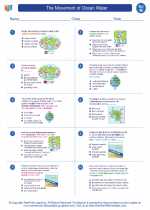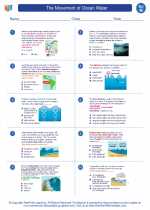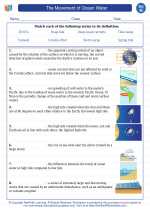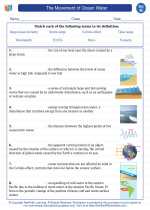Tides
Tides are the rise and fall of sea levels caused by the gravitational forces exerted by the moon and the sun, and the rotation of the Earth. The gravitational pull of the moon is the primary force responsible for tides, with the sun also exerting a smaller influence.
Types of Tides
There are two main types of tides: high tides and low tides. High tides occur when the water level reaches its highest point, while low tides occur when the water level reaches its lowest point.
Factors Affecting Tides
Several factors can affect the height and timing of tides, including the alignment of the sun, moon, and Earth, as well as the shape of the coastline and the depth of the ocean.
Tidal Cycle
The tidal cycle typically consists of two high tides and two low tides each day, with a period of approximately 12 hours and 25 minutes between each high or low tide. This pattern is known as a semidiurnal tide.
Study Guide
- What causes tides?
- What are the two main types of tides?
- What factors can affect the height and timing of tides?
- Describe the tidal cycle.
- How do the gravitational forces of the moon and the sun contribute to the formation of tides?
Understanding the concept of tides is important for various fields, including oceanography, marine biology, and navigation. It also plays a key role in understanding the Earth's complex interactions with celestial bodies.
Remember to study the gravitational forces of the moon and the sun, and the rotation of the Earth, as these are the foundational concepts behind the formation of tides.
.◂Science Worksheets and Study Guides Eighth Grade. The Movement of Ocean Water

 Worksheet/Answer key
Worksheet/Answer key
 Worksheet/Answer key
Worksheet/Answer key
 Worksheet/Answer key
Worksheet/Answer key
 Vocabulary/Answer key
Vocabulary/Answer key
 Vocabulary/Answer key
Vocabulary/Answer key
